Find a Treatment
[{id=102408272366, createdAt=1715348996187, updatedAt=1719574951558, 1='{type=string, value=Liposuction}', 2='{type=image, value=Image{width=595,height=419,url='https://143451706.fs1.hubspotusercontent-eu1.net/hubfs/143451706/liposuction-3.webp',altText='liposuction-3',fileId=107722419431}}', 3='{type=list, value=[{id=1, name='Stomach', order=0, label='Stomach'}, {id=5, name='Butt', order=4, label='Butt'}, {id=6, name='Body', order=5, label='Body'}, {id=9, name='Neck', order=8, label='Neck'}, {id=12, name='Legs', order=11, label='Legs'}, {id=13, name='Arms', order=12, label='Arms'}, {id=3, name='Face', order=2, label='Face'}]}', 4='{type=list, value=[{id=1, name='Excess Fat', order=0, label='Excess Fat'}, {id=3, name='Double Chin', order=2, label='Double Chin'}]}', 5='{type=list, value=[{id=1, name='Body Contouring', order=0, label='Body Contouring'}]}', 6='{type=option, value={id=2, name='2', order=1, label='2'}}', 7='{type=string, value=94%}', 8='{type=number, value=10}', 9='{type=number, value=6000}', 10='{type=string, value=https://andnewme.com/treatment/liposuction}'}, {id=102408272367, createdAt=1715348996188, updatedAt=1717845696492, 1='{type=string, value=Vaser Liposuction}', 2='{type=image, value=Image{width=200,height=200,url='https://143451706.fs1.hubspotusercontent-eu1.net/hubfs/143451706/vaser-liposuction.webp',altText='vaser-liposuction',fileId=100689974492}}', 3='{type=list, value=[{id=1, name='Stomach', order=0, label='Stomach'}, {id=3, name='Face', order=2, label='Face'}, {id=5, name='Butt', order=4, label='Butt'}, {id=6, name='Body', order=5, label='Body'}, {id=9, name='Neck', order=8, label='Neck'}, {id=12, name='Legs', order=11, label='Legs'}, {id=13, name='Arms', order=12, label='Arms'}, {id=14, name='Chin', order=13, label='Chin'}]}', 4='{type=list, value=[{id=1, name='Excess Fat', order=0, label='Excess Fat'}, {id=3, name='Double Chin', order=2, label='Double Chin'}]}', 5='{type=list, value=[{id=1, name='Body Contouring', order=0, label='Body Contouring'}]}', 6='{type=option, value={id=2, name='2', order=1, label='2'}}', 7='{type=string, value=95%}', 8='{type=number, value=19}', 9='{type=number, value=1500}'}, {id=102408272368, createdAt=1715348996189, updatedAt=1717845701736, 1='{type=string, value=Laser Liposuction}', 2='{type=image, value=Image{width=140,height=140,url='https://143451706.fs1.hubspotusercontent-eu1.net/hubfs/143451706/laser-liposuction.webp',altText='laser-liposuction',fileId=101687805671}}', 3='{type=list, value=[{id=1, name='Stomach', order=0, label='Stomach'}, {id=3, name='Face', order=2, label='Face'}, {id=5, name='Butt', order=4, label='Butt'}, {id=6, name='Body', order=5, label='Body'}, {id=9, name='Neck', order=8, label='Neck'}, {id=12, name='Legs', order=11, label='Legs'}, {id=13, name='Arms', order=12, label='Arms'}]}', 4='{type=list, value=[{id=1, name='Excess Fat', order=0, label='Excess Fat'}, {id=3, name='Double Chin', order=2, label='Double Chin'}]}', 5='{type=list, value=[{id=1, name='Body Contouring', order=0, label='Body Contouring'}]}', 6='{type=option, value={id=1, name='1', order=0, label='1'}}', 7='{type=string, value=95%}', 8='{type=number, value=19}', 9='{type=number, value=1500}'}, {id=102408272369, createdAt=1715348996190, updatedAt=1719559874827, 1='{type=string, value=Tummy Tuck}', 2='{type=image, value=Image{width=200,height=200,url='https://143451706.fs1.hubspotusercontent-eu1.net/hubfs/143451706/tummy-tuck.webp',altText='tummy-tuck',fileId=100689974478}}', 3='{type=list, value=[{id=1, name='Stomach', order=0, label='Stomach'}]}', 4='{type=list, value=[{id=4, name='Diastasis Recti', order=3, label='Diastasis Recti'}, {id=5, name='Loose Body Skin', order=4, label='Loose Body Skin'}, {id=6, name='Stretch Marks', order=5, label='Stretch Marks'}]}', 5='{type=list, value=[{id=2, name='Post-Pregnancy Procedures', order=1, label='Post-Pregnancy Procedures'}, {id=3, name='Abdominoplasty', order=2, label='Abdominoplasty'}, {id=4, name='Skin Tightening', order=3, label='Skin Tightening'}]}', 6='{type=option, value={id=1, name='1', order=0, label='1'}}', 7='{type=string, value=95%}', 8='{type=number, value=19}', 9='{type=number, value=6000}', 10='{type=string, value=https://andnewme.com/treatment/tummy-tuck}'}, {id=102408272370, createdAt=1715348996191, updatedAt=1715367114625, 1='{type=string, value=Mini Tummy Tuck}', 2='{type=image, value=Image{width=140,height=140,url='https://143451706.fs1.hubspotusercontent-eu1.net/hubfs/143451706/mini-tummy-tuck.webp',altText='mini-tummy-tuck',fileId=101709707242}}', 3='{type=list, value=[{id=1, name='Stomach', order=0, label='Stomach'}]}', 4='{type=list, value=[{id=4, name='Diastasis Recti', order=3, label='Diastasis Recti'}, {id=5, name='Loose Body Skin', order=4, label='Loose Body Skin'}]}', 5='{type=list, value=[{id=2, name='Post-Pregnancy Procedures', order=1, label='Post-Pregnancy Procedures'}, {id=3, name='Abdominoplasty', order=2, label='Abdominoplasty'}, {id=4, name='Skin Tightening', order=3, label='Skin Tightening'}]}', 6='{type=option, value={id=3, name='3', order=2, label='3'}}', 7='{type=string, value=95%}', 8='{type=number, value=19}', 9='{type=number, value=1500}'}, {id=102408272371, createdAt=1715348996192, updatedAt=1719559913272, 1='{type=string, value=Mommy Makeover}', 2='{type=image, value=Image{width=140,height=140,url='https://143451706.fs1.hubspotusercontent-eu1.net/hubfs/143451706/mommy-makeover.webp',altText='mommy-makeover',fileId=101693669316}}', 3='{type=list, value=[{id=1, name='Stomach', order=0, label='Stomach'}, {id=2, name='Breast', order=1, label='Breast'}]}', 4='{type=list, value=[{id=4, name='Diastasis Recti', order=3, label='Diastasis Recti'}, {id=6, name='Stretch Marks', order=5, label='Stretch Marks'}, {id=7, name='Large Breasts', order=6, label='Large Breasts'}, {id=8, name='Sagging Breasts', order=7, label='Sagging Breasts'}, {id=9, name='Small Breasts', order=8, label='Small Breasts'}]}', 5='{type=list, value=[{id=2, name='Post-Pregnancy Procedures', order=1, label='Post-Pregnancy Procedures'}, {id=3, name='Abdominoplasty', order=2, label='Abdominoplasty'}, {id=4, name='Skin Tightening', order=3, label='Skin Tightening'}, {id=5, name='Breast Surgery', order=4, label='Breast Surgery'}]}', 6='{type=option, value={id=4, name='4', order=3, label='4'}}', 7='{type=string, value=95%}', 8='{type=number, value=19}', 9='{type=number, value=6000}', 10='{type=string, value=https://andnewme.com/treatment/mommy-makeover}'}, {id=102408272372, createdAt=1715348996193, updatedAt=1717842092555, 1='{type=string, value=Breast Augmentation}', 2='{type=image, value=Image{width=360,height=360,url='https://143451706.fs1.hubspotusercontent-eu1.net/hubfs/143451706/breast-augmentation.jpg',altText='breast-augmentation',fileId=98415571688}}', 3='{type=list, value=[{id=2, name='Breast', order=1, label='Breast'}]}', 4='{type=list, value=[{id=9, name='Small Breasts', order=8, label='Small Breasts'}]}', 5='{type=list, value=[{id=2, name='Post-Pregnancy Procedures', order=1, label='Post-Pregnancy Procedures'}, {id=5, name='Breast Surgery', order=4, label='Breast Surgery'}]}', 6='{type=option, value={id=5, name='5', order=4, label='5'}}', 7='{type=string, value=94%}', 8='{type=number, value=60}', 9='{type=number, value=4000}', 10='{type=string, value=https://andnewme.com/treatment/breast-augmentation}'}, {id=102408272373, createdAt=1715348996194, updatedAt=1717842404036, 1='{type=string, value=Breast Reduction}', 2='{type=image, value=Image{width=140,height=140,url='https://143451706.fs1.hubspotusercontent-eu1.net/hubfs/143451706/breast-reduction.webp',altText='breast-reduction',fileId=101709714660}}', 3='{type=list, value=[{id=2, name='Breast', order=1, label='Breast'}]}', 4='{type=list, value=[{id=7, name='Large Breasts', order=6, label='Large Breasts'}]}', 5='{type=list, value=[{id=2, name='Post-Pregnancy Procedures', order=1, label='Post-Pregnancy Procedures'}]}', 7='{type=string, value=95%}', 8='{type=number, value=19}', 9='{type=number, value=1500}'}, {id=102408272374, createdAt=1715348996195, updatedAt=1717843831571, 1='{type=string, value=Breast Lift}', 2='{type=image, value=Image{width=140,height=140,url='https://143451706.fs1.hubspotusercontent-eu1.net/hubfs/143451706/breast-lift.webp',altText='breast-lift',fileId=101709714882}}', 3='{type=list, value=[{id=2, name='Breast', order=1, label='Breast'}]}', 4='{type=list, value=[{id=5, name='Loose Body Skin', order=4, label='Loose Body Skin'}, {id=8, name='Sagging Breasts', order=7, label='Sagging Breasts'}, {id=10, name='Skin Tightening', order=9, label='Skin Tightening'}, {id=9, name='Small Breasts', order=8, label='Small Breasts'}]}', 5='{type=list, value=[{id=2, name='Post-Pregnancy Procedures', order=1, label='Post-Pregnancy Procedures'}, {id=4, name='Skin Tightening', order=3, label='Skin Tightening'}, {id=5, name='Breast Surgery', order=4, label='Breast Surgery'}]}', 7='{type=string, value=95%}', 8='{type=number, value=19}', 9='{type=number, value=1500}'}, {id=102408272375, createdAt=1715348996196, updatedAt=1715356447149, 1='{type=string, value=Non Surgical Breast Lift}', 2='{type=image, value=Image{width=140,height=140,url='https://143451706.fs1.hubspotusercontent-eu1.net/hubfs/143451706/non-surgical-breast-lift.webp',altText='non-surgical-breast-lift',fileId=101709714902}}', 3='{type=list, value=[{id=2, name='Breast', order=1, label='Breast'}]}', 4='{type=list, value=[{id=8, name='Sagging Breasts', order=7, label='Sagging Breasts'}]}', 5='{type=list, value=[{id=5, name='Breast Surgery', order=4, label='Breast Surgery'}]}', 7='{type=string, value=95%}', 8='{type=number, value=19}', 9='{type=number, value=1500}'}, {id=102408272376, createdAt=1715348996197, updatedAt=1717842356020, 1='{type=string, value=Breast Reconstruction}', 2='{type=image, value=Image{width=140,height=140,url='https://143451706.fs1.hubspotusercontent-eu1.net/hubfs/143451706/breast-reconstruction.webp',altText='breast-reconstruction',fileId=101709715413}}', 3='{type=list, value=[{id=2, name='Breast', order=1, label='Breast'}]}', 4='{type=list, value=[{id=11, name='Breast Cancer', order=10, label='Breast Cancer'}, {id=7, name='Large Breasts', order=6, label='Large Breasts'}]}', 5='{type=list, value=[{id=6, name='Breast Reconstruction', order=5, label='Breast Reconstruction'}, {id=7, name='Reconstructive Surgeries', order=6, label='Reconstructive Surgeries'}, {id=5, name='Breast Surgery', order=4, label='Breast Surgery'}]}', 7='{type=string, value=95%}', 8='{type=number, value=19}', 9='{type=number, value=5000}'}, {id=102408272377, createdAt=1715348996198, updatedAt=1719559977111, 1='{type=string, value=Breast Lift with Implant}', 2='{type=image, value=Image{width=140,height=140,url='https://143451706.fs1.hubspotusercontent-eu1.net/hubfs/143451706/breast-lift-with-implants.webp',altText='breast-lift-with-implants',fileId=101709715434}}', 3='{type=list, value=[{id=2, name='Breast', order=1, label='Breast'}]}', 4='{type=list, value=[{id=5, name='Loose Body Skin', order=4, label='Loose Body Skin'}, {id=10, name='Skin Tightening', order=9, label='Skin Tightening'}]}', 5='{type=list, value=[{id=2, name='Post-Pregnancy Procedures', order=1, label='Post-Pregnancy Procedures'}, {id=4, name='Skin Tightening', order=3, label='Skin Tightening'}, {id=5, name='Breast Surgery', order=4, label='Breast Surgery'}]}', 7='{type=string, value=95%}', 8='{type=number, value=19}', 9='{type=number, value=4000}', 10='{type=string, value=https://andnewme.com/treatment/breast-implant}'}, {id=102408272570, createdAt=1715348996199, updatedAt=1719568221410, 8='{type=number, value=19}', 1='{type=string, value=Breast Implants}', 9='{type=number, value=4000}', 2='{type=image, value=Image{width=260,height=174,url='https://143451706.fs1.hubspotusercontent-eu1.net/hubfs/143451706/Breast_Implants.jpg',altText='Breast_Implants',fileId=82627637476}}', 3='{type=list, value=[{id=2, name='Breast', order=1, label='Breast'}]}', 7='{type=string, value=95%}'}, {id=102408272571, createdAt=1715348996200, updatedAt=1719568285064, 1='{type=string, value=Botox}', 2='{type=image, value=Image{width=260,height=174,url='https://143451706.fs1.hubspotusercontent-eu1.net/hubfs/143451706/botox.png',altText='botox',fileId=82628514007}}', 3='{type=list, value=[{id=3, name='Face', order=2, label='Face'}, {id=10, name='Lips', order=9, label='Lips'}, {id=14, name='Chin', order=13, label='Chin'}, {id=15, name='Jawline', order=14, label='Jawline'}, {id=11, name='Eyes', order=10, label='Eyes'}]}', 4='{type=list, value=[{id=12, name='Fine Lines and Wrinkles', order=11, label='Fine Lines and Wrinkles'}, {id=13, name='Large Pores', order=12, label='Large Pores'}, {id=14, name='Migraines', order=13, label='Migraines'}, {id=15, name='Gummy Smile', order=14, label='Gummy Smile'}, {id=16, name='Tmj', order=15, label='Tmj'}]}', 5='{type=list, value=[{id=8, name='Cheek', order=7, label='Cheek'}, {id=9, name='Chin and Jawline Enhancement', order=8, label='Chin and Jawline Enhancement'}, {id=10, name='Lip Enhancement', order=9, label='Lip Enhancement'}, {id=11, name='Tmj Treatments', order=10, label='Tmj Treatments'}, {id=12, name='Fillers and Other Injectables', order=11, label='Fillers and Other Injectables'}, {id=24, name='Migraines Treatments', order=22, label='Migraines Treatments'}]}', 7='{type=string, value=95%}', 8='{type=number, value=19}', 9='{type=number, value=800}', 10='{type=string, value=https://andnewme.com/treatment/botox}'}, {id=102408272572, createdAt=1715348996201, updatedAt=1715356486366, 1='{type=string, value=Facelift}', 2='{type=image, value=Image{width=280,height=280,url='https://143451706.fs1.hubspotusercontent-eu1.net/hubfs/143451706/Face%20Lift.png',altText='Face Lift',fileId=94552420315}}', 3='{type=list, value=[{id=3, name='Face', order=2, label='Face'}, {id=15, name='Jawline', order=14, label='Jawline'}]}', 4='{type=list, value=[{id=17, name='Sagging Face', order=16, label='Sagging Face'}, {id=18, name='Jowls', order=17, label='Jowls'}]}', 5='{type=list, value=[{id=13, name='Face and Neck Lifts', order=12, label='Face and Neck Lifts'}]}', 7='{type=string, value=88%}', 8='{type=number, value=11}', 9='{type=number, value=4500}', 10='{type=string, value=https://andnewme.com/treatment/face-lift}'}, {id=102408272573, createdAt=1715348996202, updatedAt=1715356492785, 1='{type=string, value=Dermal Fillers}', 2='{type=image, value=Image{width=600,height=400,url='https://143451706.fs1.hubspotusercontent-eu1.net/hubfs/143451706/dermal-dolgu.jpg',altText='dermal-dolgu',fileId=82628222711}}', 3='{type=list, value=[{id=3, name='Face', order=2, label='Face'}, {id=10, name='Lips', order=9, label='Lips'}, {id=14, name='Chin', order=13, label='Chin'}, {id=15, name='Jawline', order=14, label='Jawline'}]}', 4='{type=list, value=[{id=12, name='Fine Lines and Wrinkles', order=11, label='Fine Lines and Wrinkles'}, {id=19, name='Thin Lips', order=18, label='Thin Lips'}]}', 5='{type=list, value=[{id=8, name='Cheek', order=7, label='Cheek'}, {id=9, name='Chin and Jawline Enhancement', order=8, label='Chin and Jawline Enhancement'}, {id=10, name='Lip Enhancement', order=9, label='Lip Enhancement'}, {id=12, name='Fillers and Other Injectables', order=11, label='Fillers and Other Injectables'}]}', 7='{type=string, value=95%}', 8='{type=number, value=19}', 9='{type=number, value=1500}'}, {id=102408272574, createdAt=1715348996203, updatedAt=1719560076043, 1='{type=string, value=Bichectomy}', 2='{type=image, value=Image{width=200,height=200,url='https://143451706.fs1.hubspotusercontent-eu1.net/hubfs/143451706/buccal-fat-removal.webp',altText='buccal-fat-removal',fileId=96668295662}}', 3='{type=list, value=[{id=3, name='Face', order=2, label='Face'}]}', 4='{type=list, value=[{id=20, name='Large Cheeks', order=19, label='Large Cheeks'}]}', 5='{type=list, value=[{id=8, name='Cheek', order=7, label='Cheek'}, {id=9, name='Chin and Jawline Enhancement', order=8, label='Chin and Jawline Enhancement'}]}', 7='{type=string, value=95%}', 8='{type=number, value=19}', 9='{type=number, value=2000}', 10='{type=string, value=https://andnewme.com/treatment/bichectomy}'}, {id=102408272575, createdAt=1715348996204, updatedAt=1715356515558, 1='{type=string, value=Mini Facelift}', 2='{type=image, value=Image{width=426,height=454,url='https://143451706.fs1.hubspotusercontent-eu1.net/hubfs/143451706/mini-facelift.webp',altText='mini-facelift',fileId=102062474709}}', 3='{type=list, value=[{id=3, name='Face', order=2, label='Face'}, {id=15, name='Jawline', order=14, label='Jawline'}]}', 4='{type=list, value=[{id=17, name='Sagging Face', order=16, label='Sagging Face'}, {id=18, name='Jowls', order=17, label='Jowls'}]}', 5='{type=list, value=[{id=13, name='Face and Neck Lifts', order=12, label='Face and Neck Lifts'}]}', 7='{type=string, value=88%}', 8='{type=number, value=11}', 9='{type=number, value=4000}', 10='{type=string, value=https://andnewme.com/treatment/mini-facelift}'}, {id=102408272576, createdAt=1715348996205, updatedAt=1715356521210, 1='{type=string, value=Brow Lift}', 2='{type=image, value=Image{width=200,height=200,url='https://143451706.fs1.hubspotusercontent-eu1.net/hubfs/143451706/eyebrow-transplant.webp',altText='eyebrow-transplant',fileId=100690058973}}', 3='{type=list, value=[{id=3, name='Face', order=2, label='Face'}]}', 4='{type=list, value=[{id=17, name='Sagging Face', order=16, label='Sagging Face'}]}', 5='{type=list, value=[{id=13, name='Face and Neck Lifts', order=12, label='Face and Neck Lifts'}]}', 7='{type=string, value=95%}', 8='{type=number, value=19}', 9='{type=number, value=1500}'}, {id=102408272577, createdAt=1715348996206, updatedAt=1715356554425, 1='{type=string, value=Facial Fat Transfer}', 2='{type=image, value=Image{width=360,height=360,url='https://143451706.fs1.hubspotusercontent-eu1.net/hubfs/143451706/face-lift.webp',altText='face-lift',fileId=98415575505}}', 3='{type=list, value=[{id=3, name='Face', order=2, label='Face'}]}', 4='{type=list, value=[{id=21, name='Volume Loss', order=20, label='Volume Loss'}]}', 5='{type=list, value=[{id=8, name='Cheek', order=7, label='Cheek'}, {id=9, name='Chin and Jawline Enhancement', order=8, label='Chin and Jawline Enhancement'}, {id=12, name='Fillers and Other Injectables', order=11, label='Fillers and Other Injectables'}, {id=13, name='Face and Neck Lifts', order=12, label='Face and Neck Lifts'}]}', 7='{type=string, value=95%}', 8='{type=number, value=19}', 9='{type=number, value=1500}'}, {id=102408272578, createdAt=1715348996207, updatedAt=1720189071295, 1='{type=string, value=Thread Lift}', 2='{type=image, value=Image{width=200,height=200,url='https://143451706.fs1.hubspotusercontent-eu1.net/hubfs/143451706/thread-lift%20(1).webp',altText='thread-lift (1)',fileId=96668729551}}', 3='{type=list, value=[{id=3, name='Face', order=2, label='Face'}, {id=9, name='Neck', order=8, label='Neck'}, {id=15, name='Jawline', order=14, label='Jawline'}]}', 4='{type=list, value=[{id=17, name='Sagging Face', order=16, label='Sagging Face'}, {id=18, name='Jowls', order=17, label='Jowls'}, {id=22, name='Turkey Neck', order=21, label='Turkey Neck'}]}', 5='{type=list, value=[{id=13, name='Face and Neck Lifts', order=12, label='Face and Neck Lifts'}]}', 7='{type=string, value=95%}', 8='{type=number, value=19}', 9='{type=number, value=1500}', 10='{type=string, value=https://andnewme.com/treatment/thread-lift}'}, {id=102408272579, createdAt=1715348996208, updatedAt=1715356578234, 1='{type=string, value=PRP}', 2='{type=image, value=Image{width=100,height=100,url='https://143451706.fs1.hubspotusercontent-eu1.net/hubfs/143451706/neck.webp',altText='neck',fileId=98688045770}}', 3='{type=list, value=[{id=3, name='Face', order=2, label='Face'}, {id=9, name='Neck', order=8, label='Neck'}, {id=12, name='Legs', order=11, label='Legs'}]}', 4='{type=list, value=[{id=6, name='Stretch Marks', order=5, label='Stretch Marks'}, {id=12, name='Fine Lines and Wrinkles', order=11, label='Fine Lines and Wrinkles'}, {id=23, name='Scars', order=22, label='Scars'}, {id=24, name='Sun Damage', order=23, label='Sun Damage'}]}', 5='{type=list, value=[{id=8, name='Cheek', order=7, label='Cheek'}, {id=9, name='Chin and Jawline Enhancement', order=8, label='Chin and Jawline Enhancement'}, {id=12, name='Fillers and Other Injectables', order=11, label='Fillers and Other Injectables'}, {id=14, name='Scar Treatments', order=13, label='Scar Treatments'}, {id=15, name='Skin Rejuvenation and Resurfacing', order=14, label='Skin Rejuvenation and Resurfacing'}]}', 7='{type=string, value=95%}', 8='{type=number, value=19}', 9='{type=number, value=1500}'}, {id=102408272580, createdAt=1715348996209, updatedAt=1715356584329, 1='{type=string, value=Beard Transplant}', 2='{type=image, value=Image{width=200,height=200,url='https://143451706.fs1.hubspotusercontent-eu1.net/hubfs/143451706/beard-transplant.webp',altText='beard-transplant',fileId=100690058956}}', 3='{type=list, value=[{id=3, name='Face', order=2, label='Face'}, {id=7, name='Hair', order=6, label='Hair'}]}', 4='{type=list, value=[{id=25, name='Hair Loss', order=24, label='Hair Loss'}]}', 5='{type=list, value=[{id=16, name='Hair Restoration', order=15, label='Hair Restoration'}]}', 7='{type=string, value=95%}', 8='{type=number, value=19}', 9='{type=number, value=1500}'}, {id=102408272581, createdAt=1715348996210, updatedAt=1717844827098, 1='{type=string, value=Mesotherapy}', 2='{type=image, value=Image{width=254,height=199,url='https://143451706.fs1.hubspotusercontent-eu1.net/hubfs/143451706/download.jpg',altText='download',fileId=null}}', 3='{type=list, value=[{id=3, name='Face', order=2, label='Face'}, {id=5, name='Butt', order=4, label='Butt'}, {id=9, name='Neck', order=8, label='Neck'}]}', 4='{type=list, value=[{id=23, name='Scars', order=22, label='Scars'}, {id=26, name='Loose Facial Skin', order=25, label='Loose Facial Skin'}, {id=27, name='Cellulite', order=26, label='Cellulite'}]}', 5='{type=list, value=[{id=4, name='Skin Tightening', order=3, label='Skin Tightening'}, {id=14, name='Scar Treatments', order=13, label='Scar Treatments'}, {id=1, name='Body Contouring', order=0, label='Body Contouring'}]}', 7='{type=string, value=95%}', 8='{type=number, value=19}', 9='{type=number, value=1500}'}, {id=102408272582, createdAt=1715348996211, updatedAt=1715356597920, 1='{type=string, value=Non Surgical Face Lift}', 2='{type=image, value=Image{width=275,height=183,url='https://143451706.fs1.hubspotusercontent-eu1.net/hubfs/143451706/images-1.jpg',altText='images-1',fileId=null}}', 3='{type=list, value=[{id=3, name='Face', order=2, label='Face'}, {id=15, name='Jawline', order=14, label='Jawline'}]}', 4='{type=list, value=[{id=17, name='Sagging Face', order=16, label='Sagging Face'}]}', 5='{type=list, value=[{id=13, name='Face and Neck Lifts', order=12, label='Face and Neck Lifts'}]}', 7='{type=string, value=95%}', 8='{type=number, value=19}', 9='{type=number, value=1500}'}, {id=102408272583, createdAt=1715348996212, updatedAt=1715356619110, 1='{type=string, value=Rhinoplasty}', 2='{type=image, value=Image{width=624,height=498,url='https://143451706.fs1.hubspotusercontent-eu1.net/hubfs/143451706/rhinoplasty.webp',altText='rhinoplasty',fileId=99851660502}}', 3='{type=list, value=[{id=4, name='Nose', order=3, label='Nose'}]}', 4='{type=list, value=[{id=28, name='Crooked Nose', order=27, label='Crooked Nose'}, {id=29, name='Nose Bump', order=28, label='Nose Bump'}, {id=30, name='Nose Shape', order=29, label='Nose Shape'}, {id=31, name='Nose Size', order=30, label='Nose Size'}, {id=32, name='Small Nose', order=31, label='Small Nose'}, {id=33, name='Wide Nasal Tip', order=32, label='Wide Nasal Tip'}]}', 5='{type=list, value=[{id=18, name='Rhinoplasty and Nose Shaping', order=16, label='Rhinoplasty and Nose Shaping'}]}', 7='{type=string, value=94%}', 8='{type=number, value=256}', 9='{type=number, value=3000}', 10='{type=string, value=https://andnewme.com/treatment/rhinoplasty}'}, {id=102408272584, createdAt=1715348996213, updatedAt=1715356648476, 1='{type=string, value=Revision Rhinoplasty}', 2='{type=image, value=Image{width=140,height=140,url='https://143451706.fs1.hubspotusercontent-eu1.net/hubfs/143451706/revision-rhinoplasty.webp',altText='revision-rhinoplasty',fileId=101717014479}}', 3='{type=list, value=[{id=4, name='Nose', order=3, label='Nose'}]}', 4='{type=list, value=[{id=28, name='Crooked Nose', order=27, label='Crooked Nose'}, {id=29, name='Nose Bump', order=28, label='Nose Bump'}, {id=30, name='Nose Shape', order=29, label='Nose Shape'}, {id=31, name='Nose Size', order=30, label='Nose Size'}, {id=32, name='Small Nose', order=31, label='Small Nose'}, {id=33, name='Wide Nasal Tip', order=32, label='Wide Nasal Tip'}]}', 5='{type=list, value=[{id=18, name='Rhinoplasty and Nose Shaping', order=16, label='Rhinoplasty and Nose Shaping'}]}', 7='{type=string, value=95%}', 8='{type=number, value=19}', 9='{type=number, value=1500}'}, {id=102408272585, createdAt=1715348996214, updatedAt=1717844600119, 1='{type=string, value=Non Surgical Nose Job}', 2='{type=image, value=Image{width=630,height=530,url='https://143451706.fs1.hubspotusercontent-eu1.net/hubfs/143451706/non-surgical-nose-job.webp',altText='non-surgical-nose-job',fileId=97792808670}}', 3='{type=list, value=[{id=4, name='Nose', order=3, label='Nose'}]}', 4='{type=list, value=[{id=28, name='Crooked Nose', order=27, label='Crooked Nose'}, {id=29, name='Nose Bump', order=28, label='Nose Bump'}, {id=30, name='Nose Shape', order=29, label='Nose Shape'}]}', 5='{type=list, value=[{id=18, name='Rhinoplasty and Nose Shaping', order=16, label='Rhinoplasty and Nose Shaping'}, {id=12, name='Fillers and Other Injectables', order=11, label='Fillers and Other Injectables'}]}', 7='{type=string, value=95%}', 8='{type=number, value=19}', 9='{type=number, value=1500}'}, {id=102408272586, createdAt=1715348996215, updatedAt=1715356660162, 1='{type=string, value=Asian Rhinoplasty}', 2='{type=image, value=Image{width=140,height=140,url='https://143451706.fs1.hubspotusercontent-eu1.net/hubfs/143451706/asian-rhinoplasty.webp',altText='asian-rhinoplasty',fileId=101717465551}}', 3='{type=list, value=[{id=4, name='Nose', order=3, label='Nose'}]}', 4='{type=list, value=[{id=30, name='Nose Shape', order=29, label='Nose Shape'}]}', 5='{type=list, value=[{id=18, name='Rhinoplasty and Nose Shaping', order=16, label='Rhinoplasty and Nose Shaping'}]}', 7='{type=string, value=95%}', 8='{type=number, value=19}', 9='{type=number, value=1500}'}, {id=102408272587, createdAt=1715348996216, updatedAt=1715356665128, 1='{type=string, value=Ethnic Rhinoplasty}', 2='{type=image, value=Image{width=200,height=200,url='https://143451706.fs1.hubspotusercontent-eu1.net/hubfs/143451706/ethnic-nose.webp',altText='ethnic-nose',fileId=100689968839}}', 3='{type=list, value=[{id=4, name='Nose', order=3, label='Nose'}]}', 4='{type=list, value=[{id=30, name='Nose Shape', order=29, label='Nose Shape'}]}', 5='{type=list, value=[{id=18, name='Rhinoplasty and Nose Shaping', order=16, label='Rhinoplasty and Nose Shaping'}]}', 7='{type=string, value=95%}', 8='{type=number, value=19}', 9='{type=number, value=1500}'}, {id=102408272588, createdAt=1715348996217, updatedAt=1719560144750, 1='{type=string, value=Brazilian Butt Lift}', 2='{type=image, value=Image{width=600,height=399,url='https://143451706.fs1.hubspotusercontent-eu1.net/hubfs/143451706/non-surgical-butt-lift.jpg',altText='non-surgical-butt-lift',fileId=98416358861}}', 3='{type=list, value=[{id=5, name='Butt', order=4, label='Butt'}]}', 4='{type=list, value=[{id=34, name='Flat Butt', order=33, label='Flat Butt'}, {id=35, name='Small Butt', order=34, label='Small Butt'}]}', 5='{type=list, value=[{id=19, name='Hip & Butt Enhancement', order=17, label='Hip & Butt Enhancement'}]}', 7='{type=string, value=95%}', 8='{type=number, value=19}', 9='{type=number, value=8000}', 10='{type=string, value=https://andnewme.com/treatment/brazilian-butt-lift}'}, {id=102408272589, createdAt=1715348996218, updatedAt=1715356673730, 1='{type=string, value=Butt Lift}', 2='{type=image, value=Image{width=1280,height=720,url='https://143451706.fs1.hubspotusercontent-eu1.net/hubfs/143451706/butt-lift.webp',altText='butt-lift',fileId=98328256444}}', 3='{type=list, value=[{id=5, name='Butt', order=4, label='Butt'}]}', 4='{type=list, value=[{id=5, name='Loose Body Skin', order=4, label='Loose Body Skin'}, {id=36, name='Sagging Butt', order=35, label='Sagging Butt'}]}', 5='{type=list, value=[{id=4, name='Skin Tightening', order=3, label='Skin Tightening'}, {id=19, name='Hip & Butt Enhancement', order=17, label='Hip & Butt Enhancement'}]}', 7='{type=string, value=95%}', 8='{type=number, value=19}', 9='{type=number, value=1500}'}, {id=102408272590, createdAt=1715348996219, updatedAt=1715356709591, 1='{type=string, value=Butt Augmentation}', 2='{type=image, value=Image{width=200,height=200,url='https://143451706.fs1.hubspotusercontent-eu1.net/hubfs/143451706/butt-augmentation.webp',altText='butt-augmentation',fileId=100690062281}}', 3='{type=list, value=[{id=5, name='Butt', order=4, label='Butt'}]}', 4='{type=list, value=[{id=34, name='Flat Butt', order=33, label='Flat Butt'}, {id=35, name='Small Butt', order=34, label='Small Butt'}]}', 5='{type=list, value=[{id=19, name='Hip & Butt Enhancement', order=17, label='Hip & Butt Enhancement'}]}', 7='{type=string, value=95%}', 8='{type=number, value=19}', 9='{type=number, value=1500}'}, {id=102408272591, createdAt=1715348996220, updatedAt=1717844861608, 1='{type=string, value=Non Surgical Butt Lift}', 2='{type=image, value=Image{width=600,height=399,url='https://143451706.fs1.hubspotusercontent-eu1.net/hubfs/143451706/non-surgical-butt-lift.jpg',altText='non-surgical-butt-lift',fileId=98416358861}}', 3='{type=list, value=[{id=5, name='Butt', order=4, label='Butt'}]}', 4='{type=list, value=[{id=34, name='Flat Butt', order=33, label='Flat Butt'}, {id=35, name='Small Butt', order=34, label='Small Butt'}]}', 5='{type=list, value=[{id=19, name='Hip & Butt Enhancement', order=17, label='Hip & Butt Enhancement'}, {id=1, name='Body Contouring', order=0, label='Body Contouring'}]}', 7='{type=string, value=94%}', 8='{type=number, value=4}', 9='{type=number, value=4000}', 10='{type=string, value=https://andnewme.com/treatment/non-surgical-butt-lift}'}, {id=102408272592, createdAt=1715348996221, updatedAt=1715356737275, 1='{type=string, value=Body Lift}', 2='{type=image, value=Image{width=275,height=183,url='https://143451706.fs1.hubspotusercontent-eu1.net/hubfs/143451706/images%20(1).jpg',altText='images (1)',fileId=null}}', 3='{type=list, value=[{id=6, name='Body', order=5, label='Body'}]}', 4='{type=list, value=[{id=5, name='Loose Body Skin', order=4, label='Loose Body Skin'}]}', 5='{type=list, value=[{id=4, name='Skin Tightening', order=3, label='Skin Tightening'}]}', 7='{type=string, value=95%}', 8='{type=number, value=19}', 9='{type=number, value=1500}'}, {id=102408272593, createdAt=1715348996222, updatedAt=1717845138458, 1='{type=string, value=Gastric Sleeve}', 2='{type=image, value=Image{width=810,height=840,url='https://143451706.fs1.hubspotusercontent-eu1.net/hubfs/143451706/gastric-sleeve.webp',altText='gastric-sleeve',fileId=99851659484}}', 3='{type=list, value=[{id=6, name='Body', order=5, label='Body'}]}', 4='{type=list, value=[{id=37, name='Obesity', order=36, label='Obesity'}]}', 5='{type=list, value=[{id=20, name='Weight Loss Treatments', order=18, label='Weight Loss Treatments'}]}', 7='{type=string, value=94%}', 8='{type=number, value=53}', 9='{type=number, value=6000}', 10='{type=string, value=https://andnewme.com/treatment/gastric-sleeve-surgery}'}, {id=102408272594, createdAt=1715348996223, updatedAt=1715356767446, 1='{type=string, value=Gastric Balloon}', 2='{type=image, value=Image{width=200,height=200,url='https://143451706.fs1.hubspotusercontent-eu1.net/hubfs/143451706/gastric-balloon.webp',altText='gastric-balloon',fileId=100690055659}}', 3='{type=list, value=[{id=6, name='Body', order=5, label='Body'}]}', 4='{type=list, value=[{id=37, name='Obesity', order=36, label='Obesity'}]}', 5='{type=list, value=[{id=20, name='Weight Loss Treatments', order=18, label='Weight Loss Treatments'}]}', 7='{type=string, value=95%}', 8='{type=number, value=19}', 9='{type=number, value=1500}'}, {id=102408272595, createdAt=1715348996224, updatedAt=1715356774986, 1='{type=string, value=Gastric Bypass}', 2='{type=image, value=Image{width=200,height=200,url='https://143451706.fs1.hubspotusercontent-eu1.net/hubfs/143451706/gastric-botox.webp',altText='gastric-botox',fileId=100689965304}}', 3='{type=list, value=[{id=6, name='Body', order=5, label='Body'}]}', 4='{type=list, value=[{id=37, name='Obesity', order=36, label='Obesity'}]}', 5='{type=list, value=[{id=20, name='Weight Loss Treatments', order=18, label='Weight Loss Treatments'}]}', 7='{type=string, value=95%}', 8='{type=number, value=19}', 9='{type=number, value=1500}'}, {id=102408272596, createdAt=1715348996225, updatedAt=1715356779764, 1='{type=string, value=Back Lift}', 2='{type=image, value=Image{width=600,height=399,url='https://143451706.fs1.hubspotusercontent-eu1.net/hubfs/143451706/non-surgical-butt-lift.jpg',altText='non-surgical-butt-lift',fileId=98416358861}}', 3='{type=list, value=[{id=6, name='Body', order=5, label='Body'}]}', 4='{type=list, value=[{id=5, name='Loose Body Skin', order=4, label='Loose Body Skin'}]}', 5='{type=list, value=[{id=4, name='Skin Tightening', order=3, label='Skin Tightening'}]}', 7='{type=string, value=95%}', 8='{type=number, value=19}', 9='{type=number, value=1500}'}, {id=102408272597, createdAt=1715348996226, updatedAt=1715356787854, 1='{type=string, value=Gastric Botox}', 2='{type=image, value=Image{width=200,height=200,url='https://143451706.fs1.hubspotusercontent-eu1.net/hubfs/143451706/gastric-botox.webp',altText='gastric-botox',fileId=100689965304}}', 3='{type=list, value=[{id=6, name='Body', order=5, label='Body'}]}', 4='{type=list, value=[{id=37, name='Obesity', order=36, label='Obesity'}]}', 5='{type=list, value=[{id=20, name='Weight Loss Treatments', order=18, label='Weight Loss Treatments'}]}', 7='{type=string, value=95%}', 8='{type=number, value=19}', 9='{type=number, value=1500}'}, {id=102408272598, createdAt=1715348996227, updatedAt=1715356796164, 1='{type=string, value=Neck Lift}', 2='{type=image, value=Image{width=200,height=200,url='https://143451706.fs1.hubspotusercontent-eu1.net/hubfs/143451706/neck-lift.webp',altText='neck-lift',fileId=100690062583}}', 3='{type=list, value=[{id=9, name='Neck', order=8, label='Neck'}]}', 4='{type=list, value=[{id=22, name='Turkey Neck', order=21, label='Turkey Neck'}]}', 5='{type=list, value=[{id=13, name='Face and Neck Lifts', order=12, label='Face and Neck Lifts'}]}', 7='{type=string, value=95%}', 8='{type=number, value=19}', 9='{type=number, value=1500}'}, {id=102408272599, createdAt=1715348996228, updatedAt=1715356803487, 1='{type=string, value=Non Surgical Neck Lift}', 2='{type=image, value=Image{width=200,height=200,url='https://143451706.fs1.hubspotusercontent-eu1.net/hubfs/143451706/neck-lift-treatment.webp',altText='neck-lift-treatment',fileId=96673587642}}', 3='{type=list, value=[{id=9, name='Neck', order=8, label='Neck'}]}', 4='{type=list, value=[{id=22, name='Turkey Neck', order=21, label='Turkey Neck'}]}', 5='{type=list, value=[{id=13, name='Face and Neck Lifts', order=12, label='Face and Neck Lifts'}]}', 7='{type=string, value=95%}', 8='{type=number, value=19}', 9='{type=number, value=1500}'}, {id=102408272600, createdAt=1715348996229, updatedAt=1715356808857, 1='{type=string, value=Mini Neck Lift}', 2='{type=image, value=Image{width=200,height=200,url='https://143451706.fs1.hubspotusercontent-eu1.net/hubfs/143451706/neck-lift.webp',altText='neck-lift',fileId=100690062583}}', 3='{type=list, value=[{id=9, name='Neck', order=8, label='Neck'}]}', 4='{type=list, value=[{id=12, name='Fine Lines and Wrinkles', order=11, label='Fine Lines and Wrinkles'}, {id=22, name='Turkey Neck', order=21, label='Turkey Neck'}]}', 5='{type=list, value=[{id=13, name='Face and Neck Lifts', order=12, label='Face and Neck Lifts'}]}', 7='{type=string, value=95%}', 8='{type=number, value=19}', 9='{type=number, value=1500}'}, {id=102408272601, createdAt=1715348996230, updatedAt=1715356814469, 1='{type=string, value=Chin Implant}', 2='{type=image, value=Image{width=323,height=156,url='https://143451706.fs1.hubspotusercontent-eu1.net/hubfs/143451706/images%20(2).jpg',altText='images (2)',fileId=null}}', 3='{type=list, value=[{id=14, name='Chin', order=13, label='Chin'}]}', 4='{type=list, value=[{id=38, name='Small Chin', order=37, label='Small Chin'}]}', 5='{type=list, value=[{id=8, name='Cheek', order=7, label='Cheek'}, {id=9, name='Chin and Jawline Enhancement', order=8, label='Chin and Jawline Enhancement'}]}', 7='{type=string, value=95%}', 8='{type=number, value=19}', 9='{type=number, value=1500}'}, {id=102408272602, createdAt=1715348996231, updatedAt=1715356818465, 1='{type=string, value=Lip Lift}', 2='{type=image, value=Image{width=1222,height=695,url='https://143451706.fs1.hubspotusercontent-eu1.net/hubfs/143451706/after-lip-filler.png',altText='after-lip-filler',fileId=82628222657}}', 3='{type=list, value=[{id=10, name='Lips', order=9, label='Lips'}]}', 4='{type=list, value=[{id=19, name='Thin Lips', order=18, label='Thin Lips'}]}', 5='{type=list, value=[{id=10, name='Lip Enhancement', order=9, label='Lip Enhancement'}]}', 7='{type=string, value=95%}', 8='{type=number, value=19}', 9='{type=number, value=1500}'}, {id=102408272603, createdAt=1715348996232, updatedAt=1715356823148, 1='{type=string, value=Lip Fillers}', 2='{type=image, value=Image{width=1222,height=695,url='https://143451706.fs1.hubspotusercontent-eu1.net/hubfs/143451706/after-lip-filler.png',altText='after-lip-filler',fileId=82628222657}}', 3='{type=list, value=[{id=10, name='Lips', order=9, label='Lips'}]}', 4='{type=list, value=[{id=19, name='Thin Lips', order=18, label='Thin Lips'}]}', 5='{type=list, value=[{id=10, name='Lip Enhancement', order=9, label='Lip Enhancement'}, {id=12, name='Fillers and Other Injectables', order=11, label='Fillers and Other Injectables'}]}', 7='{type=string, value=95%}', 8='{type=number, value=19}', 9='{type=number, value=1500}'}, {id=102408272604, createdAt=1715348996233, updatedAt=1719560209677, 1='{type=string, value=Laser Hair Removal}', 2='{type=image, value=Image{width=259,height=194,url='https://143451706.fs1.hubspotusercontent-eu1.net/hubfs/143451706/download%20(1).jpg',altText='download (1)',fileId=null}}', 3='{type=list, value=[{id=7, name='Hair', order=6, label='Hair'}, {id=12, name='Legs', order=11, label='Legs'}]}', 4='{type=list, value=[{id=39, name='Excess Hair', order=38, label='Excess Hair'}]}', 5='{type=list, value=[{id=21, name='Hair Removal', order=19, label='Hair Removal'}]}', 7='{type=string, value=95%}', 8='{type=number, value=19}', 9='{type=number, value=500}', 10='{type=string, value=https://andnewme.com/treatment/laser-hair-removal}'}, {id=102408272605, createdAt=1715348996234, updatedAt=1717847384548, 1='{type=string, value=Thigh Lift}', 2='{type=image, value=Image{width=269,height=187,url='https://143451706.fs1.hubspotusercontent-eu1.net/hubfs/143451706/images%20(3).jpg',altText='images (3)',fileId=null}}', 3='{type=list, value=[{id=12, name='Legs', order=11, label='Legs'}]}', 4='{type=list, value=[{id=5, name='Loose Body Skin', order=4, label='Loose Body Skin'}]}', 5='{type=list, value=[{id=4, name='Skin Tightening', order=3, label='Skin Tightening'}]}', 7='{type=string, value=95%}', 8='{type=number, value=19}', 9='{type=number, value=1500}'}, {id=102408272606, createdAt=1715348996235, updatedAt=1717844869465, 1='{type=string, value=Lipedema}', 2='{type=image, value=Image{width=200,height=200,url='https://143451706.fs1.hubspotusercontent-eu1.net/hubfs/143451706/lipedema-3.webp',altText='lipedema-3',fileId=100753542862}}', 3='{type=list, value=[{id=12, name='Legs', order=11, label='Legs'}]}', 4='{type=list, value=[{id=1, name='Excess Fat', order=0, label='Excess Fat'}]}', 5='{type=list, value=[{id=1, name='Body Contouring', order=0, label='Body Contouring'}]}', 7='{type=string, value=91%}', 8='{type=number, value=26}', 9='{type=number, value=7000}', 10='{type=string, value=https://andnewme.com/treatment/lipedema}'}, {id=102408272607, createdAt=1715348996236, updatedAt=1717847505937, 1='{type=string, value=Arm Lift}', 2='{type=image, value=Image{width=305,height=165,url='https://143451706.fs1.hubspotusercontent-eu1.net/hubfs/143451706/images%20(4).jpg',altText='images (4)',fileId=null}}', 3='{type=list, value=[{id=13, name='Arms', order=12, label='Arms'}]}', 4='{type=list, value=[{id=5, name='Loose Body Skin', order=4, label='Loose Body Skin'}]}', 5='{type=list, value=[{id=4, name='Skin Tightening', order=3, label='Skin Tightening'}]}', 7='{type=string, value=95%}', 8='{type=number, value=19}', 9='{type=number, value=1500}'}, {id=102408272608, createdAt=1715348996237, updatedAt=1717845404744, 1='{type=string, value=Dental Implants}', 2='{type=image, value=Image{width=350,height=498,url='https://143451706.fs1.hubspotusercontent-eu1.net/hubfs/143451706/dental-implant-after--baron-dental-clinic-antalya-.png',altText='dental-implant-after--baron-dental-clinic-antalya-',fileId=96308715766}}', 3='{type=list, value=[{id=8, name='Teeth And Gums', order=7, label='Teeth And Gums'}]}', 4='{type=list, value=[{id=43, name='Missing Teeth', order=42, label='Missing Teeth'}]}', 5='{type=list, value=[{id=22, name='Cosmetic Dentistry', order=20, label='Cosmetic Dentistry'}, {id=23, name='General Dentistry', order=21, label='General Dentistry'}]}', 7='{type=string, value=89%}', 8='{type=number, value=7}', 9='{type=number, value=500}', 10='{type=string, value=https://andnewme.com/treatment/implant-treatment}'}, {id=102408272609, createdAt=1715348996238, updatedAt=1715356888589, 1='{type=string, value=Dental Crown}', 2='{type=image, value=Image{width=273,height=184,url='https://143451706.fs1.hubspotusercontent-eu1.net/hubfs/143451706/download%20(2).jpg',altText='download (2)',fileId=null}}', 3='{type=list, value=[{id=8, name='Teeth And Gums', order=7, label='Teeth And Gums'}]}', 4='{type=list, value=[{id=41, name='Chipped Teeth', order=40, label='Chipped Teeth'}]}', 5='{type=list, value=[{id=22, name='Cosmetic Dentistry', order=20, label='Cosmetic Dentistry'}, {id=23, name='General Dentistry', order=21, label='General Dentistry'}]}', 7='{type=string, value=95%}', 8='{type=number, value=19}', 9='{type=number, value=1500}'}, {id=102408272610, createdAt=1715348996239, updatedAt=1715356896287, 1='{type=string, value=Invisalign}', 2='{type=image, value=Image{width=311,height=162,url='https://143451706.fs1.hubspotusercontent-eu1.net/hubfs/143451706/download%20(3).jpg',altText='download (3)',fileId=null}}', 3='{type=list, value=[{id=8, name='Teeth And Gums', order=7, label='Teeth And Gums'}]}', 4='{type=list, value=[{id=40, name='Crooked Teeth', order=39, label='Crooked Teeth'}]}', 5='{type=list, value=[{id=22, name='Cosmetic Dentistry', order=20, label='Cosmetic Dentistry'}]}', 7='{type=string, value=95%}', 8='{type=number, value=19}', 9='{type=number, value=1500}'}, {id=102408272611, createdAt=1715348996240, updatedAt=1715356902219, 1='{type=string, value=Porcelain Venners}', 2='{type=image, value=Image{width=275,height=183,url='https://143451706.fs1.hubspotusercontent-eu1.net/hubfs/143451706/download%20(4).jpg',altText='download (4)',fileId=null}}', 3='{type=list, value=[{id=8, name='Teeth And Gums', order=7, label='Teeth And Gums'}]}', 4='{type=list, value=[{id=41, name='Chipped Teeth', order=40, label='Chipped Teeth'}, {id=42, name='Stained Teeth', order=41, label='Stained Teeth'}]}', 5='{type=list, value=[{id=22, name='Cosmetic Dentistry', order=20, label='Cosmetic Dentistry'}]}', 7='{type=string, value=95%}', 8='{type=number, value=19}', 9='{type=number, value=1500}'}, {id=102408272612, createdAt=1715348996241, updatedAt=1715356909659, 1='{type=string, value=Smile Makeover}', 2='{type=image, value=Image{width=825,height=510,url='https://143451706.fs1.hubspotusercontent-eu1.net/hubfs/143451706/smile-makeover.jpeg',altText='smile-makeover',fileId=98878358499}}', 3='{type=list, value=[{id=8, name='Teeth And Gums', order=7, label='Teeth And Gums'}]}', 4='{type=list, value=[{id=40, name='Crooked Teeth', order=39, label='Crooked Teeth'}, {id=41, name='Chipped Teeth', order=40, label='Chipped Teeth'}, {id=43, name='Missing Teeth', order=42, label='Missing Teeth'}, {id=44, name='Receding Gums', order=43, label='Receding Gums'}]}', 5='{type=list, value=[{id=22, name='Cosmetic Dentistry', order=20, label='Cosmetic Dentistry'}]}', 7='{type=string, value=95%}', 8='{type=number, value=19}', 9='{type=number, value=1500}'}, {id=102408272613, createdAt=1715348996242, updatedAt=1715356914371, 1='{type=string, value=Teeth Whitening}', 2='{type=image, value=Image{width=2695,height=3840,url='https://143451706.fs1.hubspotusercontent-eu1.net/hubfs/143451706/healthy-teeth-smile-woman-beautiful-2023-11-27-05-34-31-utc.jpg',altText='healthy-teeth-smile-woman-beautiful-2023-11-27-05-34-31-utc',fileId=88681656528}}', 3='{type=list, value=[{id=8, name='Teeth And Gums', order=7, label='Teeth And Gums'}]}', 4='{type=list, value=[{id=42, name='Stained Teeth', order=41, label='Stained Teeth'}]}', 5='{type=list, value=[{id=22, name='Cosmetic Dentistry', order=20, label='Cosmetic Dentistry'}, {id=23, name='General Dentistry', order=21, label='General Dentistry'}]}', 7='{type=string, value=95%}', 8='{type=number, value=19}', 9='{type=number, value=1500}'}, {id=102408272614, createdAt=1715348996243, updatedAt=1715356928238, 1='{type=string, value=Hair Transplant}', 2='{type=image, value=Image{width=280,height=280,url='https://143451706.fs1.hubspotusercontent-eu1.net/hubfs/143451706/Hair%20Transplant.png',altText='Hair Transplant',fileId=94552151495}}', 3='{type=list, value=[{id=7, name='Hair', order=6, label='Hair'}]}', 4='{type=list, value=[{id=25, name='Hair Loss', order=24, label='Hair Loss'}]}', 5='{type=list, value=[{id=16, name='Hair Restoration', order=15, label='Hair Restoration'}]}', 7='{type=string, value=99%}', 8='{type=number, value=100}', 9='{type=number, value=2500}', 10='{type=string, value=https://andnewme.com/treatment/hair-transplantation}'}, {id=102408272615, createdAt=1715348996244, updatedAt=1715356936614, 1='{type=string, value=FUE Hair Transplant}', 2='{type=image, value=Image{width=724,height=659,url='https://143451706.fs1.hubspotusercontent-eu1.net/hubfs/143451706/hair-transplant.jpg',altText='hair-transplant',fileId=98416197092}}', 3='{type=list, value=[{id=7, name='Hair', order=6, label='Hair'}]}', 4='{type=list, value=[{id=25, name='Hair Loss', order=24, label='Hair Loss'}]}', 5='{type=list, value=[{id=16, name='Hair Restoration', order=15, label='Hair Restoration'}]}', 7='{type=string, value=95%}', 8='{type=number, value=19}', 9='{type=number, value=1500}'}, {id=102408272616, createdAt=1715348996245, updatedAt=1715356943359, 1='{type=string, value=PRP for Hair Loss}', 2='{type=image, value=Image{width=630,height=360,url='https://143451706.fs1.hubspotusercontent-eu1.net/hubfs/143451706/hair-transplant-3.webp',altText='hair-transplant-3',fileId=97935118536}}', 3='{type=list, value=[{id=7, name='Hair', order=6, label='Hair'}]}', 4='{type=list, value=[{id=25, name='Hair Loss', order=24, label='Hair Loss'}]}', 5='{type=list, value=[{id=16, name='Hair Restoration', order=15, label='Hair Restoration'}]}', 7='{type=string, value=95%}', 8='{type=number, value=19}', 9='{type=number, value=1500}'}, {id=102408272617, createdAt=1715348996246, updatedAt=1715356946855, 1='{type=string, value=DHI Hair Transplant}', 2='{type=image, value=Image{width=630,height=360,url='https://143451706.fs1.hubspotusercontent-eu1.net/hubfs/143451706/hair-transplant-4.webp',altText='hair-transplant-4',fileId=97935119082}}', 3='{type=list, value=[{id=7, name='Hair', order=6, label='Hair'}]}', 4='{type=list, value=[{id=25, name='Hair Loss', order=24, label='Hair Loss'}]}', 5='{type=list, value=[{id=16, name='Hair Restoration', order=15, label='Hair Restoration'}]}', 7='{type=string, value=95%}', 8='{type=number, value=19}', 9='{type=number, value=1500}'}, {id=102408272618, createdAt=1715348996247, updatedAt=1717844874056, 1='{type=string, value=Hip Augmentation}', 2='{type=image, value=Image{width=1024,height=683,url='https://143451706.fs1.hubspotusercontent-eu1.net/hubfs/143451706/non-surgical-butt-lift-treatment.webp',altText='non-surgical-butt-lift-treatment',fileId=98328256453}}', 3='{type=list, value=[{id=16, name='Hips', order=15, label='Hips'}]}', 4='{type=list, value=[]}', 5='{type=list, value=[{id=1, name='Body Contouring', order=0, label='Body Contouring'}]}', 7='{type=string, value=95%}', 8='{type=number, value=19}', 9='{type=number, value=1500}'}, {id=102408272619, createdAt=1715348996248, updatedAt=1717832377640, 1='{type=string, value=Hip Implants}', 2='{type=image, value=Image{width=1280,height=720,url='https://143451706.fs1.hubspotusercontent-eu1.net/hubfs/143451706/butt-lift.webp',altText='butt-lift',fileId=98328256444}}', 3='{type=list, value=[{id=16, name='Hips', order=15, label='Hips'}]}', 4='{type=list, value=[]}', 5='{type=list, value=[{id=19, name='Hip & Butt Enhancement', order=17, label='Hip & Butt Enhancement'}]}', 7='{type=string, value=95%}', 8='{type=number, value=19}', 9='{type=number, value=1500}'}, {id=107686856919, createdAt=1719560238625, updatedAt=1719560654270, 1='{type=string, value=Eyelid Surgery}', 2='{type=image, value=Image{width=724,height=659,url='https://143451706.fs1.hubspotusercontent-eu1.net/hubfs/143451706/eyelid.jpeg',altText='eyelid',fileId=98416964555}}', 3='{type=list, value=[{id=11, name='Eyes', order=10, label='Eyes'}]}', 4='{type=list, value=[{id=45, name='Ptosis', order=44, label='Ptosis'}]}', 5='{type=list, value=[{id=25, name='Eyelid Enhancement', order=23, label='Eyelid Enhancement'}]}', 7='{type=string, value=95%}', 8='{type=number, value=19}', 9='{type=number, value=2000}', 10='{type=string, value=https://andnewme.com/treatment/eyelid-surgery}'}, {id=107686856920, createdAt=1719560702558, updatedAt=1719560857007, 1='{type=string, value=Ear Surgery}', 2='{type=image, value=Image{width=426,height=454,url='https://143451706.fs1.hubspotusercontent-eu1.net/hubfs/143451706/ear-surgery.webp',altText='ear-surgery',fileId=107369375425}}', 3='{type=list, value=[{id=17, name='Ears', order=16, label='Ears'}]}', 4='{type=list, value=[{id=46, name='Protruding Ears', order=45, label='Protruding Ears'}]}', 5='{type=list, value=[{id=26, name='Ear Surgery', order=24, label='Ear Surgery'}]}', 7='{type=string, value=95%}', 8='{type=number, value=19}', 9='{type=number, value=1000}', 10='{type=string, value=https://andnewme.com/treatment/ear-surgery}'}]
64
360 Treatments
2
 All
All
 Stomach
Stomach
 Breast
Breast
 Face
Face
 Nose
Nose
.webp) Butt
Butt
 Body
Body
 Hair
Hair
 Teeth & Gums
Teeth & Gums
 Neck
Neck
 Lips
Lips
 Eyes
Eyes
 Legs
Legs
-1.jpg) Arms
Arms
 Chin
Chin
.webp) Jawline
Jawline
-1.jpg) Hips
Hips
 Ears
Ears
360 Treatments
-
Body Areas
Stomach Breast Face Nose Butt Body Hair Teeth & Gums Neck Lips Eyes Legs Arms Chin Jawline Hips Ears
-
Concerns
-
Categories
-
Rating
1 2 3 4 5
-
Body Areas
Stomach Breast Face Nose Butt Body Hair Teeth & Gums Neck Lips Eyes Legs Arms Chin Jawline Hips Ears
-
Concerns
-
Categories
-
Rating
1 2 3 4 5
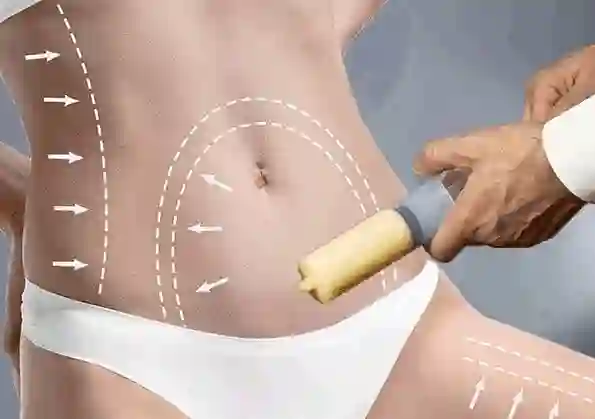

Vaser Liposuction
 19 Reviews
19 Reviews
 1500$ Average Cost
1500$ Average Cost

Laser Liposuction
 19 Reviews
19 Reviews
 1500$ Average Cost
1500$ Average Cost


Mini Tummy Tuck
 19 Reviews
19 Reviews
 1500$ Average Cost
1500$ Average Cost



Breast Reduction
 19 Reviews
19 Reviews
 1500$ Average Cost
1500$ Average Cost

Breast Lift
 19 Reviews
19 Reviews
 1500$ Average Cost
1500$ Average Cost

Non Surgical Breast Lift
 19 Reviews
19 Reviews
 1500$ Average Cost
1500$ Average Cost

Breast Reconstruction
 19 Reviews
19 Reviews
 5000$ Average Cost
5000$ Average Cost


Breast Implants
 19 Reviews
19 Reviews
 4000$ Average Cost
4000$ Average Cost



Dermal Fillers
 19 Reviews
19 Reviews
 1500$ Average Cost
1500$ Average Cost


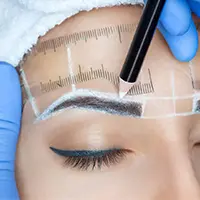
Brow Lift
 19 Reviews
19 Reviews
 1500$ Average Cost
1500$ Average Cost

Facial Fat Transfer
 19 Reviews
19 Reviews
 1500$ Average Cost
1500$ Average Cost
.webp)

PRP
 19 Reviews
19 Reviews
 1500$ Average Cost
1500$ Average Cost

Beard Transplant
 19 Reviews
19 Reviews
 1500$ Average Cost
1500$ Average Cost

Mesotherapy
 19 Reviews
19 Reviews
 1500$ Average Cost
1500$ Average Cost

Non Surgical Face Lift
 19 Reviews
19 Reviews
 1500$ Average Cost
1500$ Average Cost


Revision Rhinoplasty
 19 Reviews
19 Reviews
 1500$ Average Cost
1500$ Average Cost

Non Surgical Nose Job
 19 Reviews
19 Reviews
 1500$ Average Cost
1500$ Average Cost

Asian Rhinoplasty
 19 Reviews
19 Reviews
 1500$ Average Cost
1500$ Average Cost

Ethnic Rhinoplasty
 19 Reviews
19 Reviews
 1500$ Average Cost
1500$ Average Cost

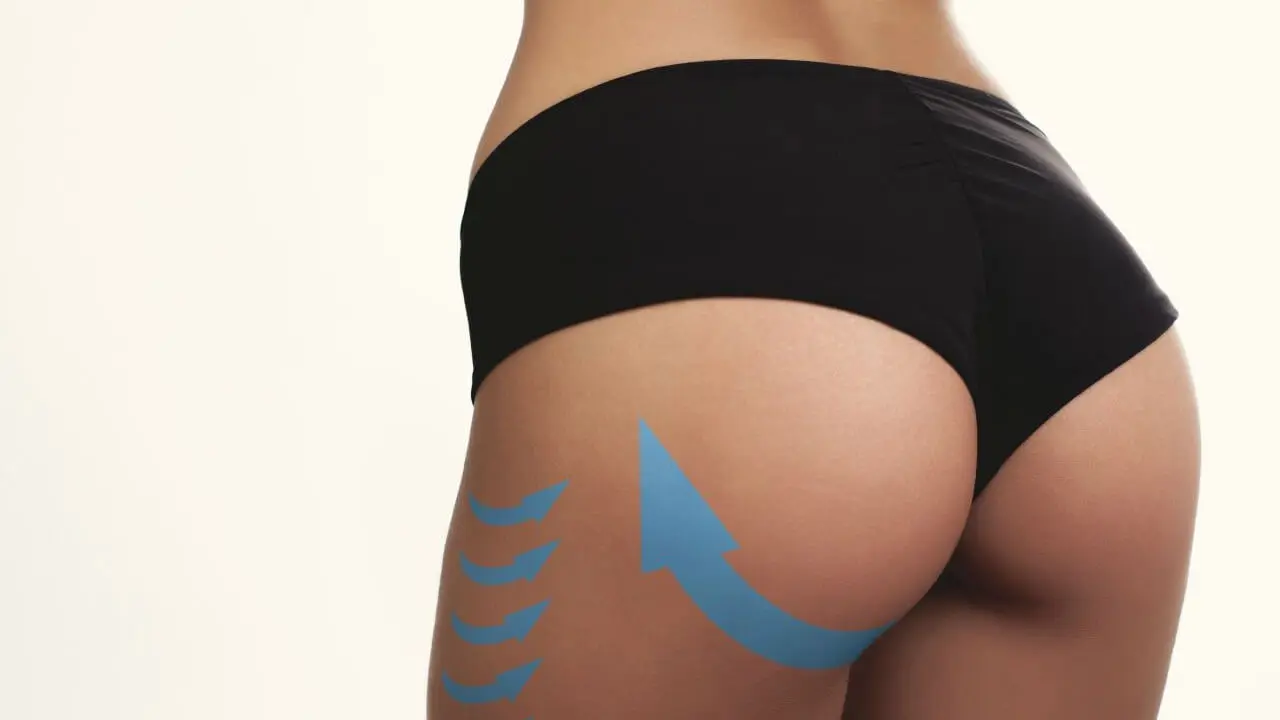
Butt Lift
 19 Reviews
19 Reviews
 1500$ Average Cost
1500$ Average Cost

Butt Augmentation
 19 Reviews
19 Reviews
 1500$ Average Cost
1500$ Average Cost

.jpg)
Body Lift
 19 Reviews
19 Reviews
 1500$ Average Cost
1500$ Average Cost


Gastric Balloon
 19 Reviews
19 Reviews
 1500$ Average Cost
1500$ Average Cost

Gastric Bypass
 19 Reviews
19 Reviews
 1500$ Average Cost
1500$ Average Cost

Back Lift
 19 Reviews
19 Reviews
 1500$ Average Cost
1500$ Average Cost

Gastric Botox
 19 Reviews
19 Reviews
 1500$ Average Cost
1500$ Average Cost

Neck Lift
 19 Reviews
19 Reviews
 1500$ Average Cost
1500$ Average Cost

Non Surgical Neck Lift
 19 Reviews
19 Reviews
 1500$ Average Cost
1500$ Average Cost

Mini Neck Lift
 19 Reviews
19 Reviews
 1500$ Average Cost
1500$ Average Cost
.jpg)
Chin Implant
 19 Reviews
19 Reviews
 1500$ Average Cost
1500$ Average Cost

Lip Lift
 19 Reviews
19 Reviews
 1500$ Average Cost
1500$ Average Cost

Lip Fillers
 19 Reviews
19 Reviews
 1500$ Average Cost
1500$ Average Cost
.jpg)
.jpg)
Thigh Lift
 19 Reviews
19 Reviews
 1500$ Average Cost
1500$ Average Cost

.jpg)
Arm Lift
 19 Reviews
19 Reviews
 1500$ Average Cost
1500$ Average Cost

.jpg)
Dental Crown
 19 Reviews
19 Reviews
 1500$ Average Cost
1500$ Average Cost
.jpg)
Invisalign
 19 Reviews
19 Reviews
 1500$ Average Cost
1500$ Average Cost
.jpg)
Porcelain Venners
 19 Reviews
19 Reviews
 1500$ Average Cost
1500$ Average Cost

Smile Makeover
 19 Reviews
19 Reviews
 1500$ Average Cost
1500$ Average Cost

Teeth Whitening
 19 Reviews
19 Reviews
 1500$ Average Cost
1500$ Average Cost


FUE Hair Transplant
 19 Reviews
19 Reviews
 1500$ Average Cost
1500$ Average Cost
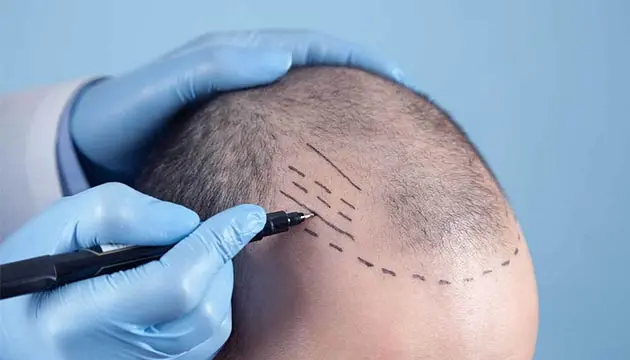
PRP for Hair Loss
 19 Reviews
19 Reviews
 1500$ Average Cost
1500$ Average Cost

DHI Hair Transplant
 19 Reviews
19 Reviews
 1500$ Average Cost
1500$ Average Cost
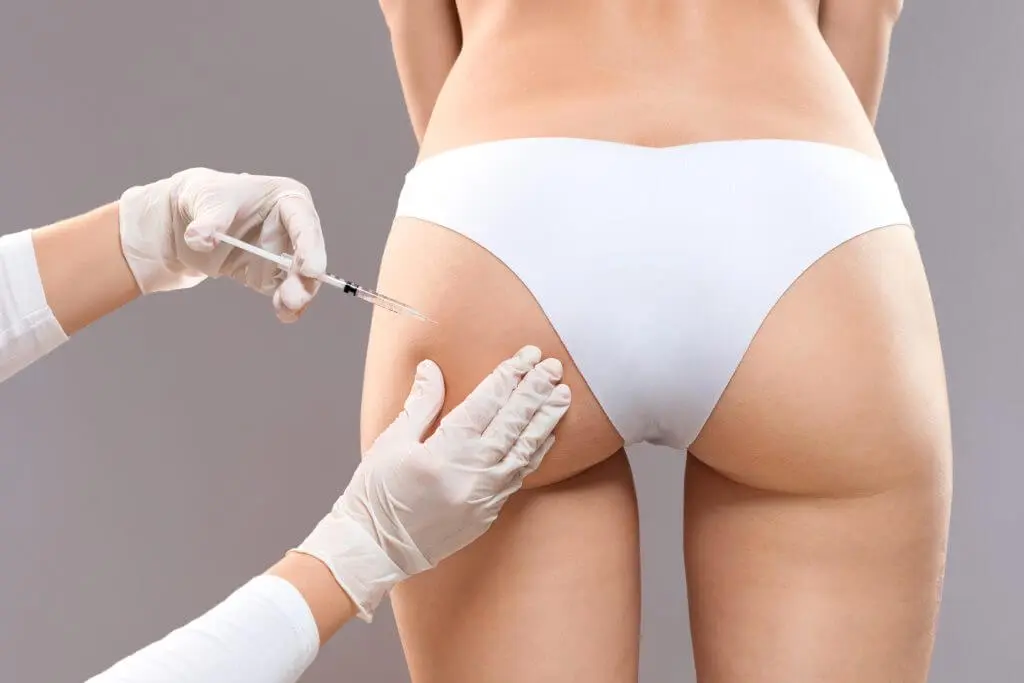
Hip Augmentation
 19 Reviews
19 Reviews
 1500$ Average Cost
1500$ Average Cost

Hip Implants
 19 Reviews
19 Reviews
 1500$ Average Cost
1500$ Average Cost


[
{
"name": "Stomach",
"treatments": ["Liposuction", "Vaser Liposuction", "Laser Liposuction", "Mommy Makeover", "Tummy Tuck", "Mini Tummy Tuck"],
"concerns": [
{
"name": "Excess Fat",
"treatments": ["Liposuction", "Vaser Liposuction", "Laser Liposuction"],
"categories": [
{
"name": "Body Contouring",
"treatments": ["Liposuction", "Vaser Liposuction", "Laser Liposuction"]
}
]
},
{
"name": "Diastasis Recti",
"treatments": ["Mommy Makeover", "Tummy Tuck", "Mini Tummy Tuck"],
"categories": [
{
"name": "Post-Pregnancy Procedures",
"treatments": ["Mommy Makeover", "Tummy Tuck", "Mini Tummy Tuck"]
},
{
"name": "Abdominoplasty",
"treatments": ["Tummy Tuck", "Mini Tummy Tuck"]
}
]
},
{
"name": "Loose Body Skin",
"treatments": ["Mommy Makeover", "Tummy Tuck", "Mini Tummy Tuck"],
"categories": [
{
"name": "Post-Pregnancy Procedures",
"treatments": ["Mommy Makeover", "Tummy Tuck", "Mini Tummy Tuck"]
},
{
"name": "Skin Tightening",
"treatments": ["Mommy Makeover", "Tummy Tuck", "Mini Tummy Tuck"]
},
{
"name": "Abdominoplasty",
"treatments": ["Mommy Makeover", "Tummy Tuck", "Mini Tummy Tuck"]
}
]
},
{
"name": "Stretch Marks",
"treatments": ["Mommy Makeover", "Tummy Tuck"],
"categories": [
{
"name": "Post-Pregnancy Procedures",
"treatments": ["Mommy Makeover", "Tummy Tuck"]
},
{
"name": "Skin Tightening",
"treatments": ["Tummy Tuck"]
},
{
"name": "Abdominoplasty",
"treatments": ["Mommy Makeover", "Tummy Tuck"]
}
]
}
]
},
{
"name": "Breast",
"treatments": ["Breast Augmentation", "Breast Reduction", "Breast Lift", "Non-Surgical Breast Lift", "Mommy Makeover", "Breast Reconstruction","Breast Lift with Implants"],
"concerns": [
{
"name": "Breast Cancer",
"treatments": ["Breast Reconstruction"],
"categories": [
{
"name": "Breast Reconstruction",
"treatments": ["Breast Reconstruction"]
},
{
"name": "Reconstructive Surgeries",
"treatments": ["Breast Reconstruction"]
}
]
},
{
"name": "Large Breasts",
"treatments": ["Mommy Makeover","Breast Reduction"],
"categories": [
{
"name": "Breast Surgery",
"treatments": ["Mommy Makeover","Breast Reconstruction"]
},
{
"name": "Post-Pregnancy Procedures",
"treatments": ["Mommy Makeover","Breast Reduction"]
}
]
},
{
"name": "Loose Body Skin",
"treatments": ["Breast Lift"],
"categories": [
{
"name": "Skin Tightening",
"treatments": ["Breast Lift"]
}
]
},
{
"name": "Sagging Breasts",
"treatments": ["Mommy Makeover","Breast Lift","Non-Surgical Breast Lift"],
"categories": [
{
"name": "Breast Surgery",
"treatments": ["Mommy Makeover","Breast Lift","Non-Surgical Breast Lift"]
},
{
"name": "Post-Pregnancy Procedures",
"treatments": ["Mommy Makeover","Breast Lift"]
},
{
"name": "Skin Tightening",
"treatments": ["Breast Lift"]
}
]
},
{
"name": "Small Breasts",
"treatments": ["Mommy Makeover","Breast Lift","Breast Augmentation"],
"categories": [
{
"name": "Breast Surgery",
"treatments": ["Mommy Makeover","Breast Lift","Breast Augmentation"]
},
{
"name": "Post-Pregnancy Procedures",
"treatments": ["Mommy Makeover","Breast Lift","Breast Augmentation"]
}
]
}
]
},
{
"name": "Face",
"treatments": ["Botox", "Liposuction", "Facelift", "Dermal Fillers", "Buccal fat Removal", "Vaser Liposuction","Mini Facelift","Brow Lift","Laser Liposuction","Facial Fat Transfer","Thread Lift","PRP","Beard Transplant","Mesotherapy","Non-Surgical Face Lift"],
"concerns": [
{
"name": "Excess Fat",
"treatments": ["Liposuction","Vaser Liposuction","Laser Liposuction"],
"categories": [
{
"name": "Body Contouring",
"treatments": ["Liposuction","Vaser Liposuction","Laser Liposuction"]
}
]
},
{
"name": "Fine Lines and Wrinkles",
"treatments": ["Botox","Dermal Fillers","PRP"],
"categories": [
{
"name": "Cheek, Chin and Jawline Enhancement",
"treatments": ["Botox","Dermal Fillers","PRP"]
},
{
"name": "Fillers and Other Injectables",
"treatments": ["Botox","Dermal Fillers","PRP"]
}
]
},
{
"name": "Hair Loss",
"treatments": ["Beard Transplant"],
"categories": [
{
"name": "Hair Restoration",
"treatments": ["Beard Transplant"]
}
]
},
{
"name": "Large Cheeks",
"treatments": ["Buccal fat Removal"],
"categories": [
{
"name": "Cheek, Chin and Jawline Enhancement",
"treatments": ["Buccal fat Removal"]
}
]
},
{
"name": "Large Pores",
"treatments": ["Botox"],
"categories": [
{
"name": "Cheek, Chin and Jawline Enhancement",
"treatments": ["Botox"]
},
{
"name": "Fillers and Other Injectables",
"treatments": ["Botox"]
}
]
},
{
"name": "Loose Facial Skin",
"treatments": ["Mesotherapy"],
"categories": [
{
"name": "Skin Tightening",
"treatments": ["Mesotherapy"]
}
]
},
{
"name": "Migraines",
"treatments": ["Botox"],
"categories": [
{
"name": "Migraines Treatments",
"treatments": ["Botox"]
}
]
},
{
"name": "Sagging Face",
"treatments": ["Facelift","Mini Facelift","Brow Lift","Thread Lift","Non-Surgical Face Lift"],
"categories": [
{
"name": "Face and Neck Lifts",
"treatments": ["Facelift","Mini Facelift","Brow Lift","Thread Lift","Non-Surgical Face Lift"]
}
]
},
{
"name": "Scars",
"treatments": ["PRP","Mesotherapy"],
"categories": [
{
"name": "Scar Treatments",
"treatments": ["PRP","Mesotherapy"]
}
]
},
{
"name": "Sun Damage",
"treatments": ["PRP"],
"categories": [
{
"name": "Fillers and Other Injectables",
"treatments": ["PRP"]
}
]
},
{
"name": "Volume Loss",
"treatments": ["Facial Fat Transfer"],
"categories": [
{
"name": "Cheek, Chin and Jawline Enhancement",
"treatments": ["Facial Fat Transfer"]
},
{
"name": "Face and Neck Lifts",
"treatments": ["Facial Fat Transfer"]
},
{
"name": "Fillers and Other Injectables",
"treatments": ["Facial Fat Transfer"]
}
]
}
]
},
{
"name": "Nose",
"treatments": ["Rhinoplasty", "Revision Rhinoplasty", "Non Surgical Nose Job", "Asian Rhinoplasty", "Ethnic Rhinoplasty"],
"concerns": [
{
"name": "Crooked Nose",
"treatments": ["Rhinoplasty", "Revision Rhinoplasty", "Non Surgical Nose Job"],
"categories": [
{
"name": "Fillers and Other Injectables",
"treatments": ["Non-Surgical Nose Job"]
},
{
"name": "Rhinoplasty and Nose Shaping",
"treatments": ["Rhinoplasty", "Revision Rhinoplasty", "Non Surgical Nose Job"]
}
]
},
{
"name": "Nose Bump",
"treatments": ["Rhinoplasty", "Revision Rhinoplasty", "Non Surgical Nose Job"],
"categories": [
{
"name": "Fillers and Other Injectables",
"treatments": ["Non-Surgical Nose Job"]
},
{
"name": "Rhinoplasty and Nose Shaping",
"treatments": ["Rhinoplasty", "Revision Rhinoplasty", "Non Surgical Nose Job"]
}
]
},
{
"name": "Nose Shape",
"treatments": ["Rhinoplasty", "Revision Rhinoplasty", "Non Surgical Nose Job", "Asian Rhinoplasty", "Ethnic Rhinoplasty"],
"categories": [
{
"name": "Fillers and Other Injectables",
"treatments": ["Non-Surgical Nose Job"]
},
{
"name": "Rhinoplasty and Nose Shaping",
"treatments": ["Rhinoplasty", "Revision Rhinoplasty", "Non Surgical Nose Job", "Asian Rhinoplasty", "Ethnic Rhinoplasty"]
}
]
},
{
"name": "Nose Size",
"treatments": ["Rhinoplasty", "Revision Rhinoplasty"],
"categories": [
{
"name": "Rhinoplasty and Nose Shaping",
"treatments": ["Rhinoplasty", "Revision Rhinoplasty"]
}
]
},
{
"name": "Small Nose",
"treatments": ["Rhinoplasty", "Revision Rhinoplasty"],
"categories": [
{
"name": "Rhinoplasty and Nose Shaping",
"treatments": ["Rhinoplasty", "Revision Rhinoplasty"]
}
]
},
{
"name": "Wide Nasal Tip",
"treatments": ["Rhinoplasty", "Revision Rhinoplasty"],
"categories": [
{
"name": "Rhinoplasty and Nose Shaping",
"treatments": ["Rhinoplasty", "Revision Rhinoplasty"]
}
]
}
]
},
{
"name": "Butt",
"treatments": ["Brazilian Butt Lift","Liposuction", "Vaser Liposuction", "Butt Lift", "Laser Liposuction", "Butt Augmentation","Mesotherapy","Non-Surgical Butt Lift"],
"concerns": [
{
"name": "Cellulite",
"treatments": ["Mesotherapy"],
"categories": [
{
"name": "Body Contouring",
"treatments": ["Mesotherapy"]
}
]
},
{
"name": "Excess Fat",
"treatments": ["Liposuction","Vaser Liposuction","Laser Liposuction"],
"categories": [
{
"name": "Body Contouring",
"treatments": ["Liposuction","Vaser Liposuction","Laser Liposuction"]
}
]
},
{
"name": "Flat Butt",
"treatments": ["Brazilian Butt Lift","Butt Augmentation","Non-Surgical Butt Lift"],
"categories": [
{
"name": "Body Contouring",
"treatments": ["Non-Surgical Butt Lift"]
},
{
"name": "Hip & Butt Enhancement",
"treatments": ["Brazilian Butt Lift","Butt Augmentation","Non-Surgical Butt Lift"]
}
]
},
{
"name": "Loose Body Skin",
"treatments": ["Butt Lift"],
"categories": [
{
"name": "Skin Tightening",
"treatments": ["Butt Lift"]
}
]
},
{
"name": "Sagging Butt",
"treatments": ["Butt Lift"],
"categories": [
{
"name": "Hip & Butt Enhancement",
"treatments": ["Butt Lift"]
}
]
},
{
"name": "Small Butt",
"treatments": ["Brazilian Butt Lift","Butt Augmentation","Non-Surgical Butt Lift"],
"categories": [
{
"name": "Body Contouring",
"treatments": ["Non-Surgical Butt Lift"]
},
{
"name": "Hip & Butt Enhancement",
"treatments": ["Brazilian Butt Lift","Butt Augmentation","Non-Surgical Butt Lift"]
}
]
}
]
},
{
"name": "Body",
"treatments": ["Liposuction","Body Lift", "Gastric Sleeve", "Vaser Liposuction", "Gastric Balloon", "Gastric Bypass","Laser Liposuction","Back Lift","Gastric Botox"],
"concerns": [
{
"name": "Excess Fat",
"treatments": ["Liposuction","Vaser Liposuction","Laser Liposuction"],
"categories": [
{
"name": "Body Contouring",
"treatments": ["Liposuction","Vaser Liposuction","Laser Liposuction"]
}
]
},
{
"name": "Loose Body Skin",
"treatments": ["Body Lift","Back Lift"],
"categories": [
{
"name": "Skin Tightening",
"treatments": ["Body Lift","Back Lift"]
}
]
},
{
"name": "Obesity",
"treatments": ["Gastric Sleeve","Gastric Balloon","Gastric Bypass","Gastric Botox"],
"categories": [
{
"name": "Weight Loss Treatments",
"treatments": ["Gastric Sleeve","Gastric Balloon","Gastric Bypass","Gastric Botox"]
}
]
}
]
},
{
"name": "Hair",
"treatments": ["Hair Transplant","FUE Hair Transplant", "Laser Hair Removal", "PRP for Hair Loss", "Beard Transplant", "DHI Hair Transplant"],
"concerns": [
{
"name": "Excess Hair",
"treatments": ["Laser Hair Removal"],
"categories": [
{
"name": "Hair Removal",
"treatments": ["Laser Hair Removal"]
}
]
},
{
"name": "Hair Loss",
"treatments": ["Hair Transplant","FUE Hair Transplant","PRP for Hair Loss","Beard Transplant","DHI Hair Transplant"],
"categories": [
{
"name": "Hair Restoration",
"treatments": ["Hair Transplant","FUE Hair Transplant","PRP for Hair Loss","Beard Transplant","DHI Hair Transplant"]
}
]
}
]
},
{
"name": "Teeth And Gums",
"treatments": ["Dental Implants","Dental Crown", "Invisalign", "Porcelain Veneers", "Smile Makeover", "Teeth Whitening"],
"concerns": [
{
"name": "Chipped Teeth",
"treatments": ["Dental Crown","Porcelain Veneers","Smile Makeover"],
"categories": [
{
"name": "Cosmetic Dentistry",
"treatments": ["Dental Crown","Porcelain Veneers","Smile Makeover"]
},
{
"name": "General Dentistry",
"treatments": ["Dental Crown"]
}
]
},
{
"name": "Crooked Teeth",
"treatments": ["Invisalign","Smile Makeover"],
"categories": [
{
"name": "Cosmetic Dentistry",
"treatments": ["Invisalign","Smile Makeover"]
}
]
},
{
"name": "Missing Teeth",
"treatments": ["Dental Implants","Smile Makeover"],
"categories": [
{
"name": "Cosmetic Dentistry",
"treatments": ["Dental Implants","Smile Makeover"]
},
{
"name": "General Dentistry",
"treatments": ["Dental Implants"]
}
]
},
{
"name": "Receding Gums",
"treatments": ["Smile Makeover"],
"categories": [
{
"name": "Cosmetic Dentistry",
"treatments": ["Smile Makeover"]
}
]
},
{
"name": "Stained Teeth",
"treatments": ["Porcelain Veneers","Teeth Whitening"],
"categories": [
{
"name": "Cosmetic Dentistry",
"treatments": ["Porcelain Veneers","Teeth Whitening"]
},
{
"name": "General Dentistry",
"treatments": ["Teeth Whitening"]
}
]
}
]
},
{
"name": "Neck",
"treatments": ["Liposuction","Neck Lift", "Vaser Liposuction", "Laser Liposuction", "PRP", "Mesotherapy","Non-Surgical Neck Lift","Mini Neck Lift","Thread Lift"],
"concerns": [
{
"name": "Double Chin",
"treatments": ["Liposuction","Vaser Liposuction","Laser Liposuction"],
"categories": [
{
"name": "Body Contouring",
"treatments": ["Liposuction","Vaser Liposuction","Laser Liposuction"]
}
]
},
{
"name": "Excess Fat",
"treatments": ["Liposuction","Vaser Liposuction","Laser Liposuction"],
"categories": [
{
"name": "Body Contouring",
"treatments": ["Liposuction","Vaser Liposuction","Laser Liposuction"]
}
]
},
{
"name": "Fine Lines and Wrinkles",
"treatments": ["PRP","Mini Neck Lift"],
"categories": [
{
"name": "Face and Neck Lifts",
"treatments": ["Mini Neck Lift"]
},
{
"name": "Fillers and Other Injectables",
"treatments": ["PRP"]
}
]
},
{
"name": "Loose Facial Skin",
"treatments": ["Mesotherapy"],
"categories": [
{
"name": "Skin Tightening",
"treatments": ["Mesotherapy"]
}
]
},
{
"name": "Scars",
"treatments": ["PRP","Mesotherapy"],
"categories": [
{
"name": "Scar Treatments",
"treatments": ["PRP","Mesotherapy"]
}
]
},
{
"name": "Sun Damage",
"treatments": ["PRP"],
"categories": [
{
"name": "Fillers and Other Injectables",
"treatments": ["PRP"]
}
]
},
{
"name": "Turkey Neck",
"treatments": ["Neck Lift","Non-Surgical Neck Lift","Mini Neck Lift","Thread Lift"],
"categories": [
{
"name": "Face and Neck Lifts",
"treatments": ["Neck Lift","Non-Surgical Neck Lift","Mini Neck Lift","Thread Lift"]
}
]
}
]
},
{
"name": "Lips",
"treatments": ["Botox","Dermal Fillers", "Lip Lift", "Lip Fillers"],
"concerns": [
{
"name": "Fine Lines and Wrinkles",
"treatments": ["Dermal Fillers"],
"categories": [
{
"name": "Fillers and Other Injectables",
"treatments": ["Dermal Fillers"]
}
]
},
{
"name": "Gummy Smile",
"treatments": ["Botox"],
"categories": [
{
"name": "Lip Enhancement",
"treatments": ["Botox"]
}
]
},
{
"name": "Thin Lips",
"treatments": ["Dermal Fillers", "Lip Lift", "Lip Fillers"],
"categories": [
{
"name": "Fillers and Other Injectables",
"treatments": ["Lip Fillers"]
},
{
"name": "Lip Enhancement",
"treatments": ["Dermal Fillers", "Lip Lift", "Lip Fillers"]
}
]
}
]
},
{
"name": "Legs",
"treatments": ["Liposuction","Vaser Liposuction", "Laser Hair Removal", "Thigh Lift","Laser Liposuction","Lipedema","PRP"],
"concerns": [
{
"name": "Excess Fat",
"treatments": ["Liposuction","Vaser Liposuction","Laser Liposuction","Lipedema"],
"categories": [
{
"name": "Body Contouring",
"treatments": ["Liposuction","Vaser Liposuction","Laser Liposuction","Lipedema"]
}
]
},
{
"name": "Excess Hair",
"treatments": ["Laser Hair Removal"],
"categories": [
{
"name": "Hair Removal",
"treatments": ["Laser Hair Removal"]
}
]
},
{
"name": "Loose Body Skin",
"treatments": ["Thigh Lift"],
"categories": [
{
"name": "Skin Tightening",
"treatments": ["Thigh Lift"]
}
]
},
{
"name": "Scars",
"treatments": ["PRP"],
"categories": [
{
"name": "Scar Treatments",
"treatments": ["PRP"]
}
]
},
{
"name": "Stretch Marks",
"treatments": ["PRP"],
"categories": [
{
"name": "Skin Rejuvenation and Resurfacing",
"treatments": ["PRP"]
}
]
}
]
},
{
"name": "Arms",
"treatments": ["Liposuction","Arm Lift", "Vaser Liposuction", "Laser Liposuction"],
"concerns": [
{
"name": "Excess Fat",
"treatments": ["Liposuction", "Vaser Liposuction", "Laser Liposuction"],
"categories": [
{
"name": "Body Contouring",
"treatments": ["Liposuction", "Vaser Liposuction", "Laser Liposuction"]
}
]
},
{
"name": "Loose Body Skin",
"treatments": ["Arm Lift"],
"categories": [
{
"name": "Skin Tightening",
"treatments": ["Arm Lift"]
}
]
}
]
},
{
"name": "Chin",
"treatments": ["Botox","Dermal Fillers", "Vaser Liposuction", "Chin Implant"],
"concerns": [
{
"name": "Double Chin",
"treatments": ["Vaser Liposuction"],
"categories": [
{
"name": "Body Contouring",
"treatments": ["Vaser Liposuction"]
}
]
},
{
"name": "Excess Fat",
"treatments": ["Vaser Liposuction"],
"categories": [
{
"name": "Body Contouring",
"treatments": ["Vaser Liposuction"]
}
]
},
{
"name": "Fine Lines and Wrinkles",
"treatments": ["Botox","Dermal Fillers"],
"categories": [
{
"name": "Cheek, Chin and Jawline Enhancement",
"treatments": ["Botox","Dermal Fillers"]
},
{
"name": "Fillers and Other Injectables",
"treatments": ["Botox","Dermal Fillers"]
}
]
},
{
"name": "Large Pores",
"treatments": ["Botox"],
"categories": [
{
"name": "Cheek, Chin and Jawline Enhancement",
"treatments": ["Botox"]
},
{
"name": "Fillers and Other Injectables",
"treatments": ["Botox"]
}
]
},
{
"name": "Small Chin",
"treatments": ["Chin Implant"],
"categories": [
{
"name": "Cheek, Chin and Jawline Enhancement",
"treatments": ["Chin Implant"]
}
]
}
]
},
{
"name": "Jawline",
"treatments": ["Botox","Facelift", "Dermal Fillers", "Mini Facelift","Thread Lift","Non-Surgical Face Lift"],
"concerns": [
{
"name": "Fine Lines and Wrinkles",
"treatments": ["Dermal Fillers"],
"categories": [
{
"name": "Fillers and Other Injectables",
"treatments": ["Dermal Fillers"]
}
]
},
{
"name": "Jowls",
"treatments": ["Facelift","Mini Facelift","Thread Lift"],
"categories": [
{
"name": "Face and Neck Lifts",
"treatments": ["Facelift","Mini Facelift","Thread Lift"]
}
]
},
{
"name": "Sagging Face",
"treatments": ["Facelift","Thread Lift","Non-Surgical Face Lift"],
"categories": [
{
"name": "Face and Neck Lifts",
"treatments": ["Facelift","Thread Lift","Non-Surgical Face Lift"]
}
]
},
{
"name": "Tmj",
"treatments": ["Botox"],
"categories": [
{
"name": "Tmj Treatments",
"treatments": ["Botox"]
}
]
}
]
},
{
"name": "Hips",
"treatments": ["Hip Augmentation","Hip Implants"],
"concerns": [
{
"name": "",
"treatments": ["Hip Augmentation","Hip Implants"],
"categories": [
{
"name": "Body Contouring",
"treatments": ["Hip Augmentation"]
},
{
"name": "Hip & Butt Enhancement",
"treatments": ["Hip Implants"]
}
]
}
]
}
]

